Sunday’s Classic / Strategies for High Water Streamer Fishing
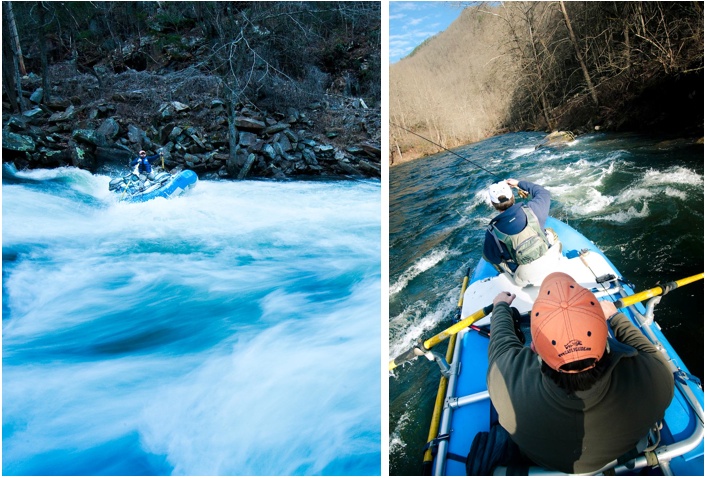
It’s really hard to beat streamer fishing high water on tailwater’s from a drift boat, especially when your wanting to target trophy class fish. Although numbers of trout caught during high water flows usually are lower than fishing during low water flows, the size of your catches generally are much larger. In my opinion, the biggest fish in the river prefer to feed during high water because it’s easy for them to ambush their prey, and they feel camouflaged and protected by the high water flows. For those of you that fish tailwater’s you probably understand water flows change significantly during generation and non-generation periods. Some tailwaters during minimum flow periods have water releases under 100 cubic feet of water per second (CFS), and when generation is taking place, water flows can be 10-20 times higher. Because of this, it’s very important for anglers fishing high water to outfit themselves correctly, otherwise they may find themselves coming off the water fish-less. Below are some tips and strageties I use on tailwaters when I’m fishing high water conditions. Tip 1. Leave your 4-5 weight fly rods at home and pack your 7-9 weight fly rods. Your best bet for going after the big boys during high water flows is fishing streamers. There are some tailwater’s out there where you can still dry fly and nymph fish effectively, but most of the time, if you want to target the largest trout in the river, you’ll want your flies to imitate the larger food sources. Some examples of these food sources are: sculpins, daces, crayfish, and fingerling size trout. These guys are the food choices that trophy class fish prefer to hunt down and forage on during high water flows. Since you’ll be fishing a variety of sinking fly lines and large profile … Continue reading
Read More »Saturday Shoutout / Sipping Emergers – Invasive Control
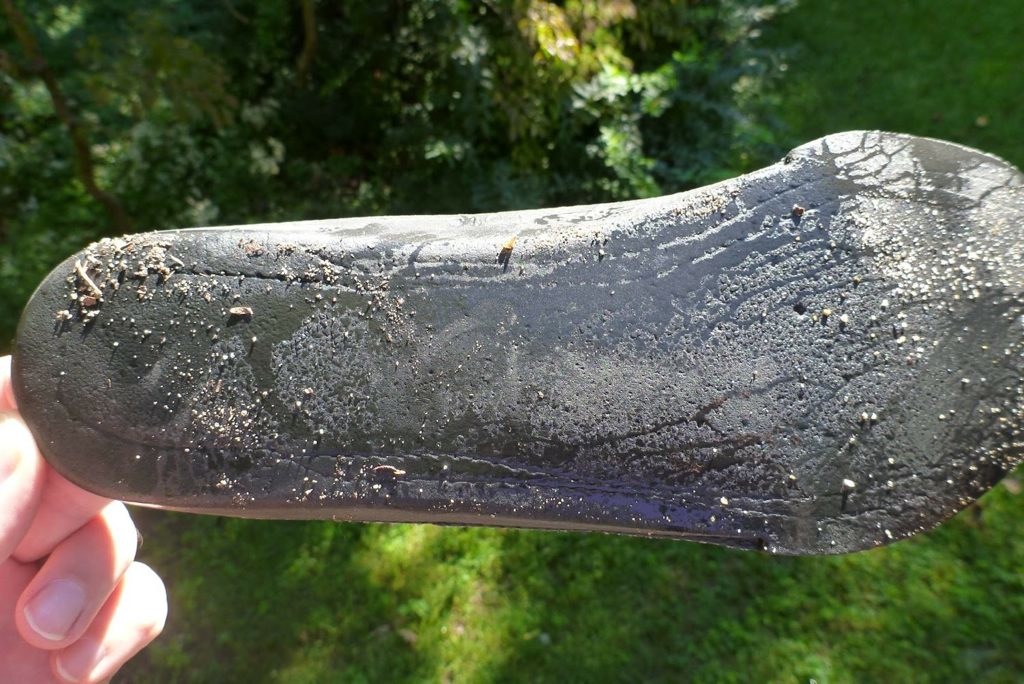
This week’s Saturday shout out goes to the Sipping Emergers Blog with Steve Zakur’s tip on limiting the spread of invasive species by making sure your gear is completely dried out in between fishing trips. Sipping Emergers – Dry Gear Sipping Emergers, points out that fly fishing gear that is 100% dried out in between fishing trips, kills most of the invasive species, and greatly reduces the risk of introducing them on other watersheds you travel to. The picture above is from an insole of a wading boot that still remaines saturated with water after several days of drying. Steve Zakur points out that the wading boots looked completely dry from the outside, and that it was only after he pulled out the insole, that he noticed this hidden risk that’s often overlooked by fly anglers. Just like Steve Zakur, I to have never thought to remove my wading boot insoles, and I thank him for pointing this important high-risk area out. Pass on the word and when possible always wash your wading boots with a clorox/water mix after fishing trips to help eliminate the risk of spreading invasive species on our watersheds. Keep it Reel, Kent Klewein Gink & Gasoline www.ginkandgasoline.com hookups@ginkandgasoline.com Sign Up For Our Weekly Newsletter!
Read More »New Gear From Redington

In the past two years Redington has proven to be a real trail blazer. They have turned much of their focus to developing great new products for folks new to fly fishing and for women. Redington’s mission seems to be one of accessibility. Their new Topo outfit includes a rod, reel, line, tippet, flies and best of all a QR code that takes you to casting lessons on your smart phone! They’ve done everything but hook the fish for you. Their specialized women’s products, including their award winning women’s waders, offer value to the fastest growing and most underserved demographic in fly fishing. As Redington reaches out to these important demographics they also commit themselves to improving the quality of every product in their line. I’ve been really impressed with the changes made at Redington. I wear their waders and fish a couple of their rods. Good job guys…and ladies! Check out the videos for some great new stuff from Redington for 2013. Louis Cahill Gink & Gasoline www.ginkandgasoline.com hookups@ginkandgasoline.com Sign Up For Our Weekly Newsletter!
Read More »Has Distance Casting Hijacked Rod Design?
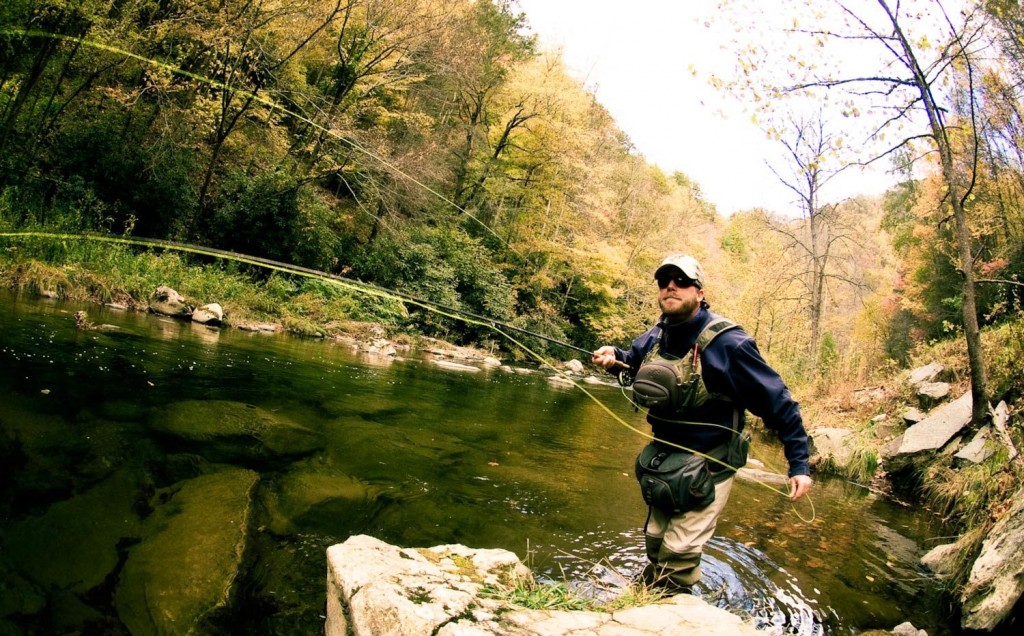
EVERY TIME I VISIT A FLY FISHING TRADE SHOW AND WALK BY ONE OF THOSE 100′ CASTING PONDS FILLED SHOULDER TO SHOULDER WITH ANGLERS ALL TRYING THEIR BEST TO LAND THEIR FLY ON THE FAR END OF THE CASTING POND, I ASK MYSELF, “IS THAT REALLY WHAT THE MAJORITY OF ANGLERS TODAY THINK FLY CASTING IS ALL ABOUT”?
A part of me thinks we should shorten those casting ponds all together, and instead throw out a bunch of target rings at random distances starting out at 20 feet. Maybe that would paint a clearer picture of what fly casting is about and how a fly rods performance should be judged. Casting a 5wt and shooting backing through the tip of the rod is hard to do, and something to be proud of, but is it really what we find ourselves doing when we’re out on the water trout fishing?
Furthermore, have we all become so tunnel visioned that we feel it’s correct to judge a fly rods performance and craftsmanship based on how much fly line it can pick up and carry, and how far we can cast a fly with it? That’s not how I judge a fly rod. It’s about a fly rods ability to drop a dry fly perfectly into the feeding lane of a rising trout, it’s about effortlessly making a nice side-arm roll cast along the far bank under the overhanging foliage. It’s about having a rod in my hand that gives me the confidence to feel like
Read More »Sunday Classic / The Slack Tide Bar

I’ve spent a lot of evenings with my feet in the sand and a glass of rum in my hand at the Slack Tide Bar at the Andros South lodge. The Slack Tide is just a tiki hut on the beach, but it’s the best place I know to listen to tales of woe and exaltation and bone fishing. The house cocktail goes like this: One parts Anejo rum, one part coconut rum, two parts orange juice, one part good tunes, one part great conversation, two parts lasting friendships. Add warm sand and cool breeze and enjoy. Try that cocktail, it really is good! Louis Cahill Gink & Gasoline www.ginkandgasoline.com hookups@ginkandgasoline.com Sign Up For Our Weekly Newsletter!
Read More »Saturday Shoutout / Deeter V Block
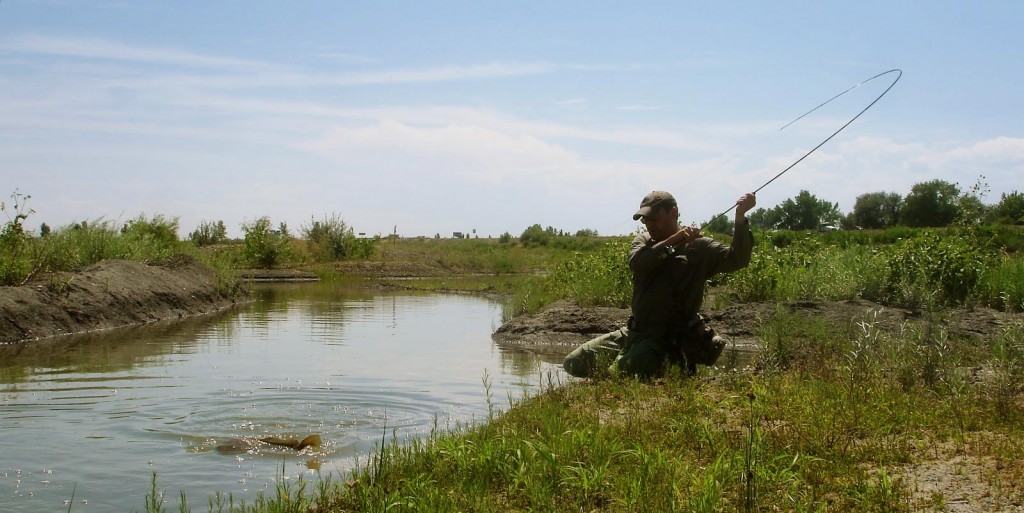
Do you care too much, or too little, about how many fish you catch or how you catch them? This week two of my favorite writers get to thinking about the numbers. Whether it’s the number of fish or the number of casts, greed or too much of a good thing, what matters to you? Erin Block on, “Derivations of Insanity: or, On Carping, Casting, and Chocolate Cake” Kirk Deeter on, Do Most Anglers Care Too Much About “How Many,” and Not Enough About “How?” Louis Cahill Gink & Gasoline www.ginkandgasoline.com hookups@ginkandgasoline.com Sign Up For Our Weekly Newsletter!
Read More »Cheeky Reels – Gettin Cheeky With It
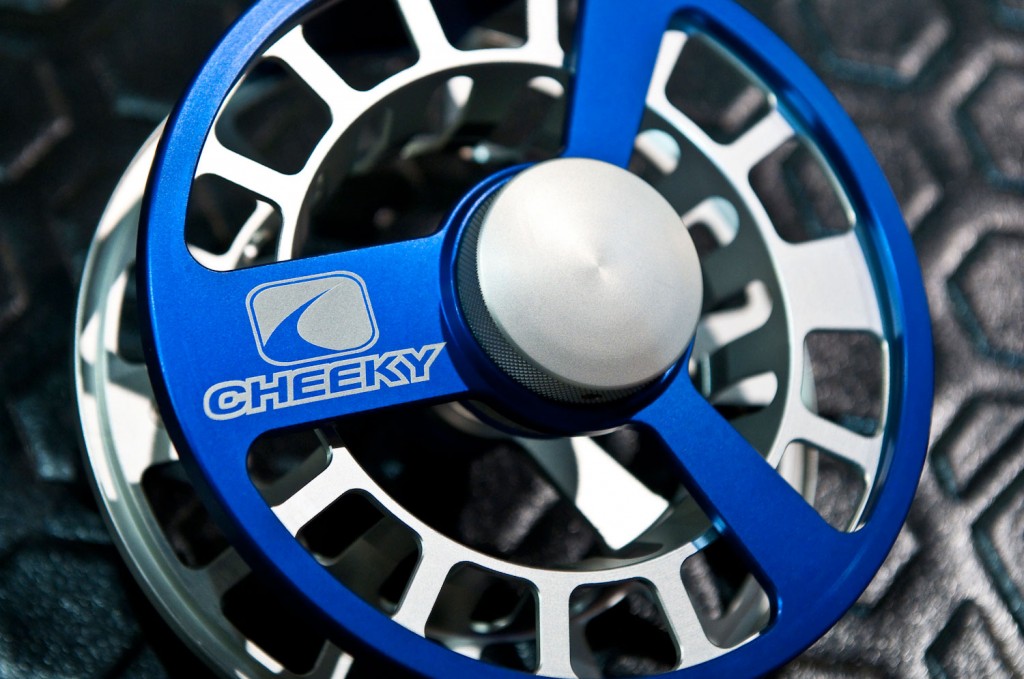
Many of you probably did get the correlation between the post title and Will Smith’s 90s rap hit, “Gettin Jiggy With It”. I just couldn’t help myself. This Friday we interview Ted Upton from Cheeky Reels about their new reel models for 2013. Cheeky Reels Cheeky Reels focuses on upholding four primary elements in all their reel designs. These four elements are durability, simplicity, affordability and style. Cheeky reels are built to stand up to the toughest fishing conditions, while being assembled with the least amount of parts possible. The less working parts you have, the less opportunity you have for failure on the water. With the tough economic times we’ve been dealt the last five years, it’s great to see a reel manufacture in the market that’s offering both quality and affordability to fly fisherman for both saltwater and freshwater reels. No matter where it swims or how big the fish, Cheeky Reels has a model that’s ready for the fight. For more information about Cheeky Reels please visit their website. Keep it Reel, Kent Klewein Gink & Gasoline www.ginkandgasoline.com hookups@ginkandgasoline.com Sign Up For Our Weekly Newsletter!
Read More »Don’t Gink it, Sink It
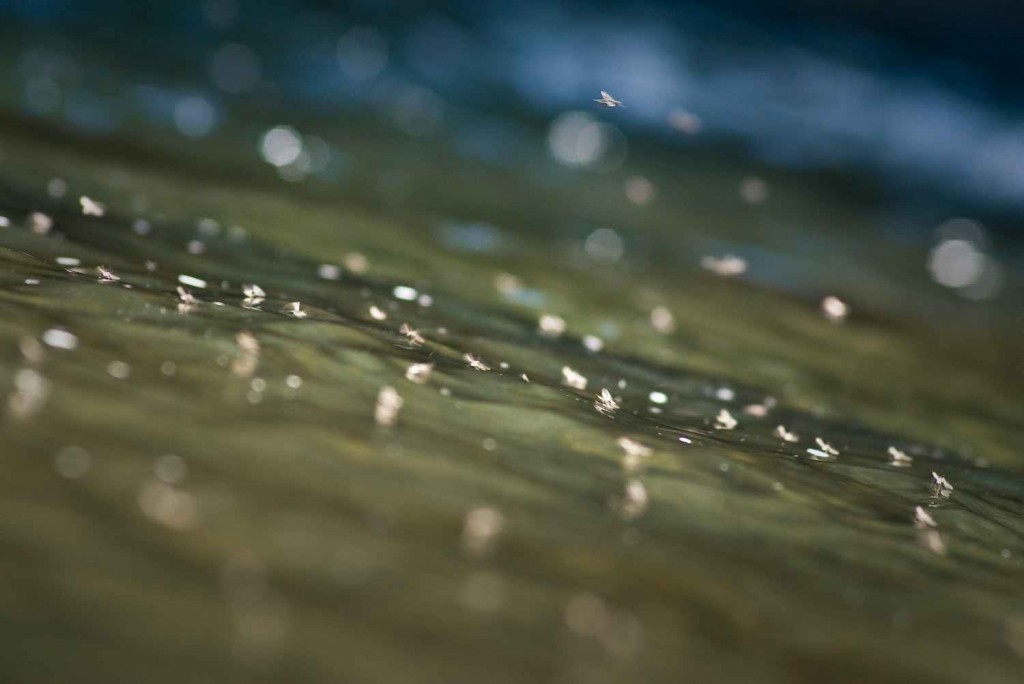
Ever been on a trout stream during a blanket hatch and no matter how many times you drift your floating imitation over the rising fish, it’s ignored?
I’ve experienced this frustrating situation many times on the water. When this happened in the past, I used to think I was using the wrong pattern, or I was getting micro-drag during my drift or maybe my tippet was too large. Although one or more of these can often be the culprit of failing to get bites during a heavy hatch, it’s actually more common that you’re problem lies in the fact that you’re choosing to fish your fly on the surface instead of below the surface.
When hundreds or even thousands of bugs are on the water it makes your fly pattern very difficult to distinguish itself apart from all the other naturals on the water. Take for instance a trico spinner fall in late August or September. When in full swing, it can seem like almost every square inch of the water is covered with these tiny guys at times. Although many of them float long distances on the surface, eventually they will sink. Not all at once of course, just a portion of them here and there. When you choose to sink your fly pattern instead of floating it, you’re going to increase your chances of catching those feeding fish for three reasons.
1. You decrease the amount of competition between your fly and all the naturals.
By sinking your fly pattern below all the naturals on the surface your giving you’re pattern a much better chance of the fish spotting it. Below the surface there’s going to be far less naturals packed in close proximity to each other than on the surface.
2. The closer your fly is to the fish the easier it is for them to eat it.
By sinking your fly pattern, you’rr positioning your fly closer to the feeding fish. This gives you an advantage, because it makes it easier for the fish to eat your fly, and they don’t have to expend as much energy swimming all the way to the surface.
3. Smart fish often feed below the surface out of sight.
There’s always going to be a percentage of really smart trout, often the biggest, that prefer to feed below the surface, because it’s safer. They may not
Sunday’s Classic / Don’t Be Afraid to Change Out Flies

This week’s Sunday Classic we talk about the importance of changing out your flies on the water when you’re not catching fish. Don’t stick with a fly pattern if you’re not getting bites. Photo By: Louis Cahill How long do you fish with flies without success before you decide to change them? I’ll usually fish for about thirty minutes with my first rig/fly of the day, and if I’m not getting any hookups, I’ll begin regularly changing my flies out until I find a pattern that works. The willingness to change your flies on the water when your not getting bites, is often the key factor in determining whether you have a good or bad day of fishing. I can’t tell you how many times I’ve had someone walk up to me in the parking lot at the end of the day and complain about how the fish weren’t biting. While I, on the other hand, had caught and released dozens of fish in the same section of water. Most of the time that discouraged angler stubbornly stuck with a few patterns during the day, and didn’t change flies enough times to find out what patterns were really working. How do I know this? I know this because I was that discouraged angler many times early on, in my fly fishing career. It can be very obvious to us that changing flies is the answer when we’re able to sight-fish and see fish rejecting our flies, but many times you’ll find yourself fishing in conditions where sight-fishing isn’t an option. A few examples of this is when your fishing fast moving choppy water, water with significant glare, and stained water conditions. None of these conditionsw provide anglers the opportunity to get visual feedback from fish. In these conditions, anglers should … Continue reading
Read More »Saturday Shoutout / Orvis Fly Fishing Learning Center
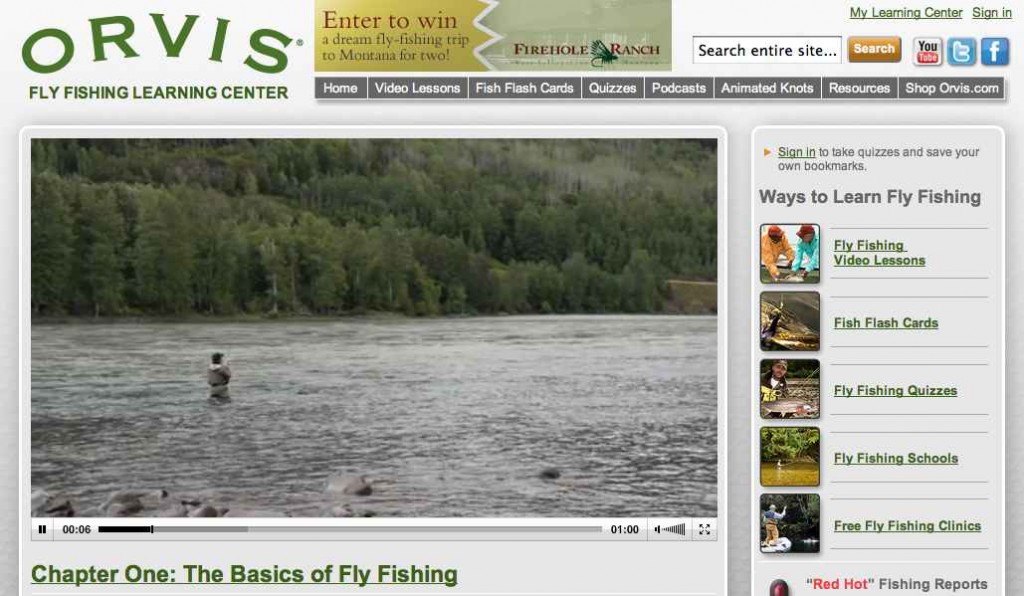
This weeks Saturday Shoutout goes to Orvis for their newest website dedicated to teaching anglers how to fly fish. Orvis Fly Fishing Learning Center I was quite impressed with the wealth of information on this site, as well as, it’s great viewing compatibility across multiple ISO devices and platforms. The Orvis fly fishing learning center caters towards new fly fishermen entering the sport that are eager to learn how to fly fish, but don’t make the mistake of thinking you won’t find quality information if you’re an intermediate or advanced fly fisher. Sure, there’s a lot of beginner related info on the site, but you have to remember it’s intended for first-timers and kids. My favorite categories of the website are all the great “How To Articles” and “Podcasts” available at a quick click, that covers just about everything fly fishing related. And I have to give Tom Rosenbauer props for his exceptional writing style that paints a clear picture any skill level can comprehend. Tom’s been a big influence for me on how I develop and write my own tips & techniques posts on Gink & Gasoline. If you’re looking for top notch podcasts, you’ll find some of the best on the internet here. Looking for super techy information like learning the art of fishing emergers or increasing your saltwater fly fishing competency? You’ll find all you want to know on the website, and a boat load of other worthy topics that wouldn’t hurt most of us to brush up on. Check the new website out and let us know what you think. Keep it Reel, Kent Klewein Gink & Gasoline www.ginkandgasoline.com hookups@ginkandgasoline.com Sign Up For Our Weekly Newsletter!
Read More »